Britain is home to 36% of the world’s population of grey seals. The Norfolk coast is a popular breeding ground for the marine mammals, plus several sites in Cornwall and the Scottish coast.
Our guide on how to spot seals without disturbing the colony, the best seal watching spots in the UK, plus how to identify harbour seals and grey seals.
How to spot seals without disturbing the colony
Spotting seals can be an exciting wildlife encounter, but it is very important to follow these guidelines to avoid disturbing the colony as it can cause great distress or harm.
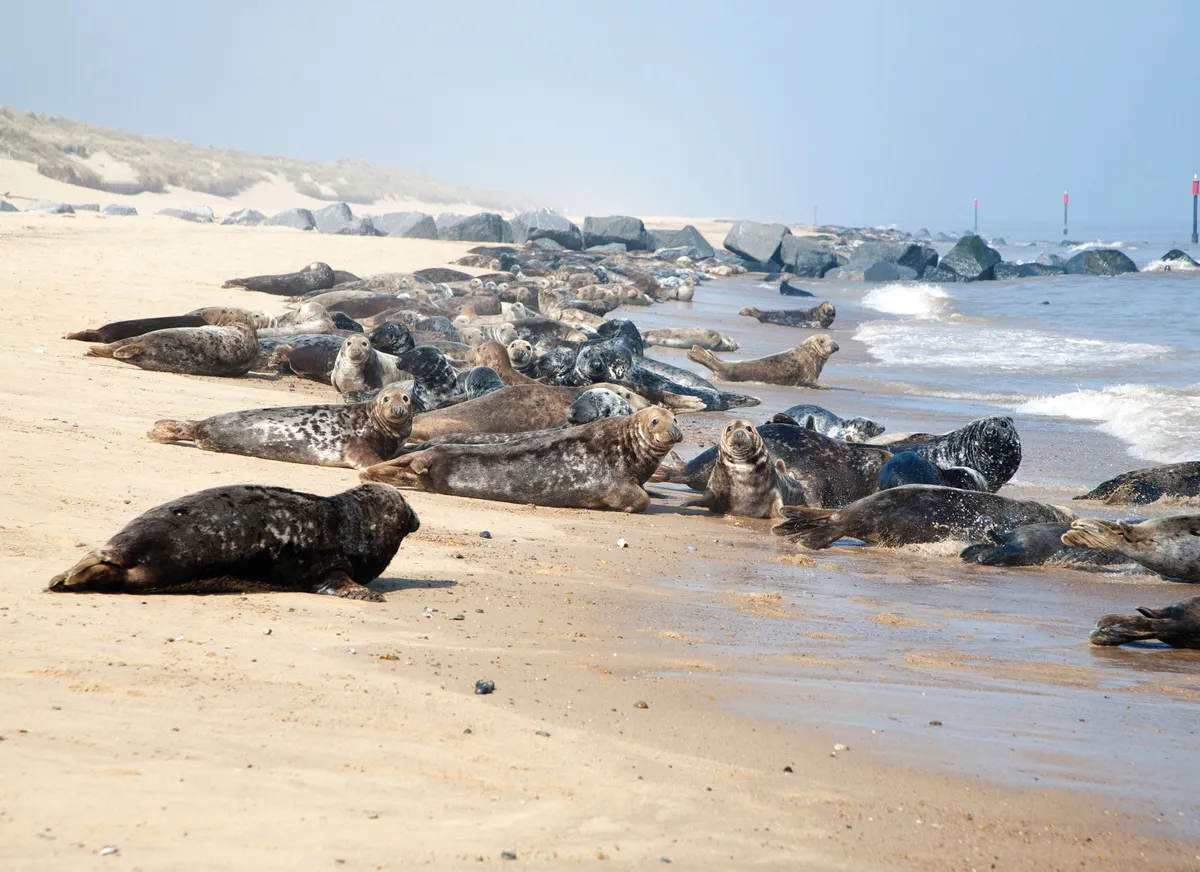
Don't get too close!
As a general rule, don't get any closer to a seal than 20m: this is the length of two London buses. Never get between a seal and her pup, or a seal and the sea.
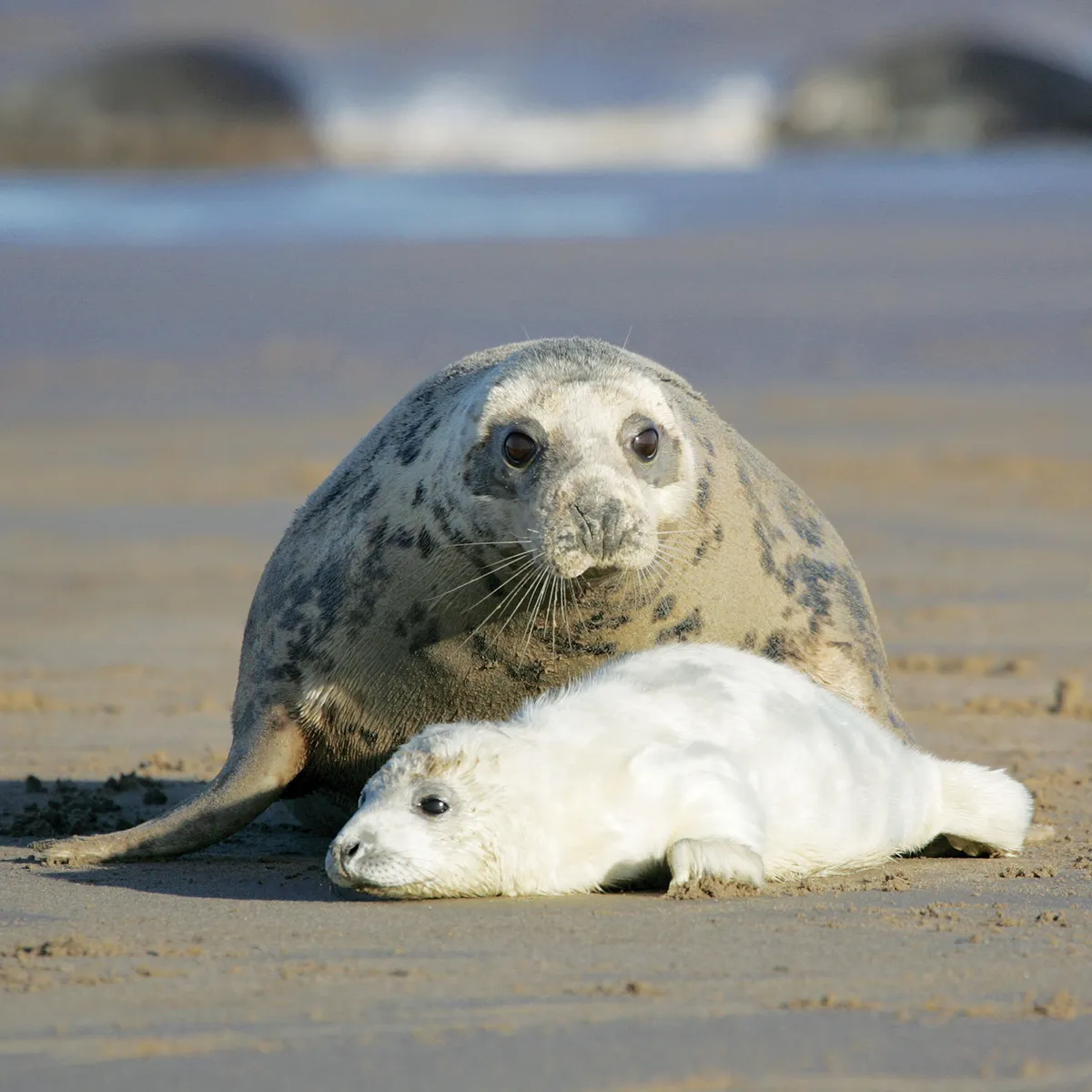
Keep dogs on a lead
Never allow a dog to run loose near a seal colony. Keep dogs on short leads. Dogs running up and sniffing the animals, even on extending leashes, causes distress. Also don't play with balls or frisbees – especially the open-centred kind, sometimes called a flying ring. These are the cause of untold suffering among the seals.
Plastic pollution
Broken or discarded plastic trawler nets entangle both birds and marine mammals and are a constant menace along the Norfolk coast. When it comes to litter, seal pups are the most vulnerable as they explore the world with their mouths and will play with and eat plastic objects in the water and on the beach. They can starve after filling their stomachs with plastic bags. In 2017, the story of Mrs Frisbee went all over the world on social media. A plastic frisbee – the kind with an open centre – became stuck around her neck, digging in so deeply that it almost severed her head. Fortunately, she recovered from her injuries.
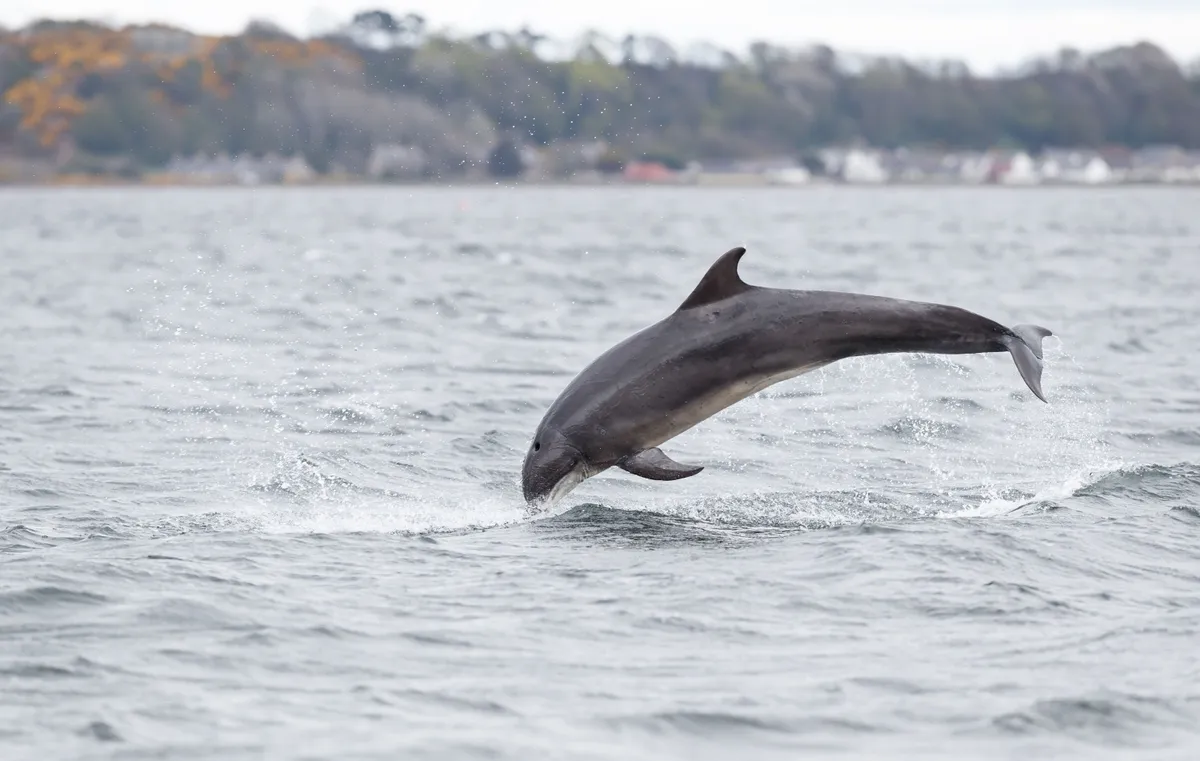
Stay quiet
Keep noise to a minimum. Young children should be comfortable with how to behave. If your dog is prone to being vocal, a beach with seals isn’t the best place to walk him.
What species of seal is found in the UK?
While there are more than 30 different seal species, there are only two types of seal found in UK waters - the harbour seal (also known as the common seal) and the grey seal. If you are lucky you may spot another species, but this is very rare.
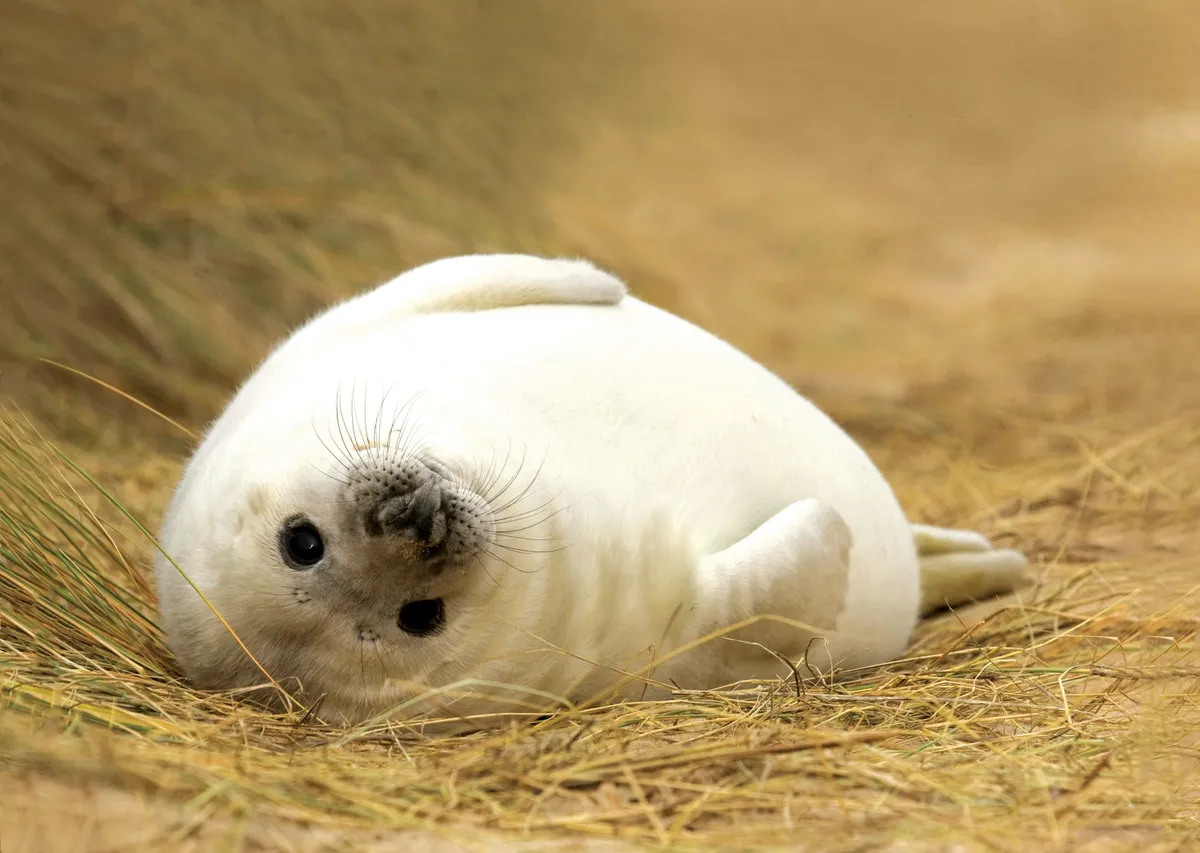
How can you tell grey and harbour seals apart?
Grey seal
Britain's largest native carnivore is the grey seal, with just under half of their global population inhabiting coastal waters of the UK. Autumn hails the start of the pupping season which begins from as early as mid-September and lasts through to January depending on the colony and location. Their curious nature and cuddly appearance makes these animals bewitching to watch and this season is the perfect time to observe them as mothers and pups bask on beaches, sand banks and rocky outcrops.
Born on rocky outcrops or in sheltered coves, a typical grey seal pup weighs 15kg. For the next three weeks this pup suckles maternal milk that’s very high in fat and typically puts on a further 30kg, tripling its birth weight. During this early stage the pups are vulnerable to birth complications and trauma from other seals.
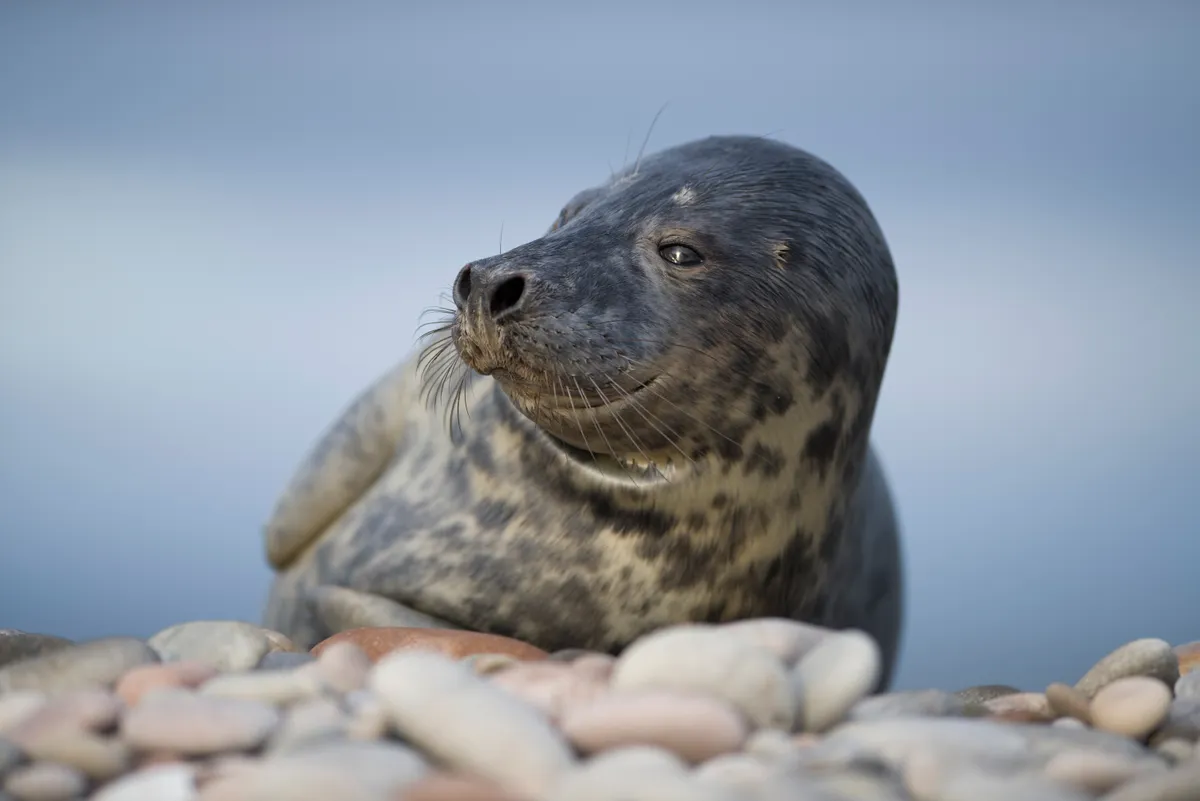
After three weeks, the pups tend to form small groups known as weaner pods that remain on land while the mothers return to the sea to feed. After a week or two the pups eventually take their first swim in the sea and start the treacherous journey to adulthood. Pup mortality is high and only half of the newborn pups reach maturity.
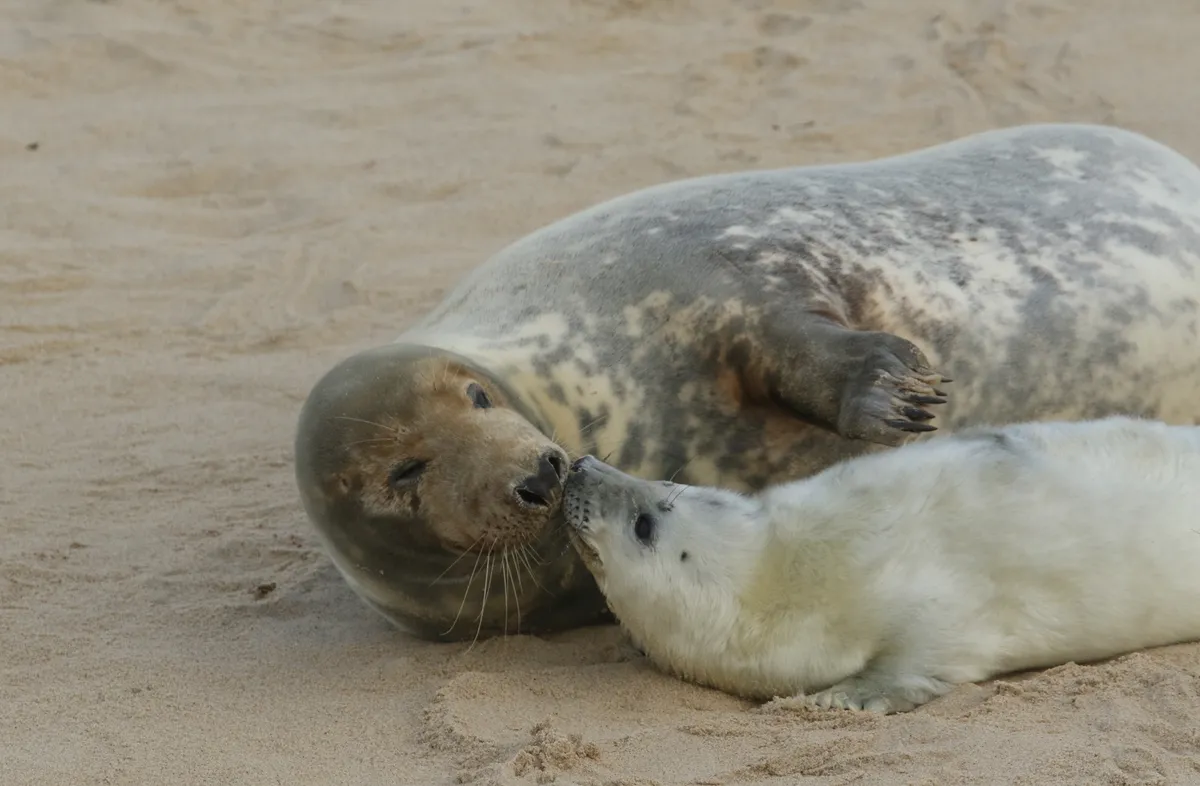
Males can live for more than 25 years and will begin breeding by the time they’re eight years old, while females start breeding after five years and can live up to 46 years.
During the course of their lives seals face danger in the forms of starvation, respiratory infections and getting trapped in fishing gear. Offshore there’s also the threat of predation from orcas or even sharks. Life for a grey seal is tough and these beautiful creatures have to be exceptionally hardy to get through it.
The UK coast is home to roughly 38% of the world’s population of grey seals (Halichoerus grypus) – some 110,000 individuals. This is significant from a conservation standpoint when you think that there are fewer grey seals in the world than African elephants. Particularly given these robust mammals are able to flourish in a harsh marine environment that brings daily challenges.
These grey seals were filmed by expert 'seal diver' Ben Burville off the Northumberland coast. This footage shows a young female and male engaged in "courtship" behaviour.
Harbour seal
Britain's largest native carnivore is the grey seal, but the other resident seal species is the smaller harbour (also known as a common seal) seal (Phoca vitulina). The UK is home to approximately 5% of the world’s population of harbour seals.
There are at least 33,400 harbour seals in UK waters. This is based on counts of seals at coastal haul-outs during the moulting period in August. Studies in Scotland and the Netherlands suggest that this number underestimates the total, representing only 60-70% of animals aged one year or older. Applying this correction factor indicates that the total population lies between 48,000 and 56,000.
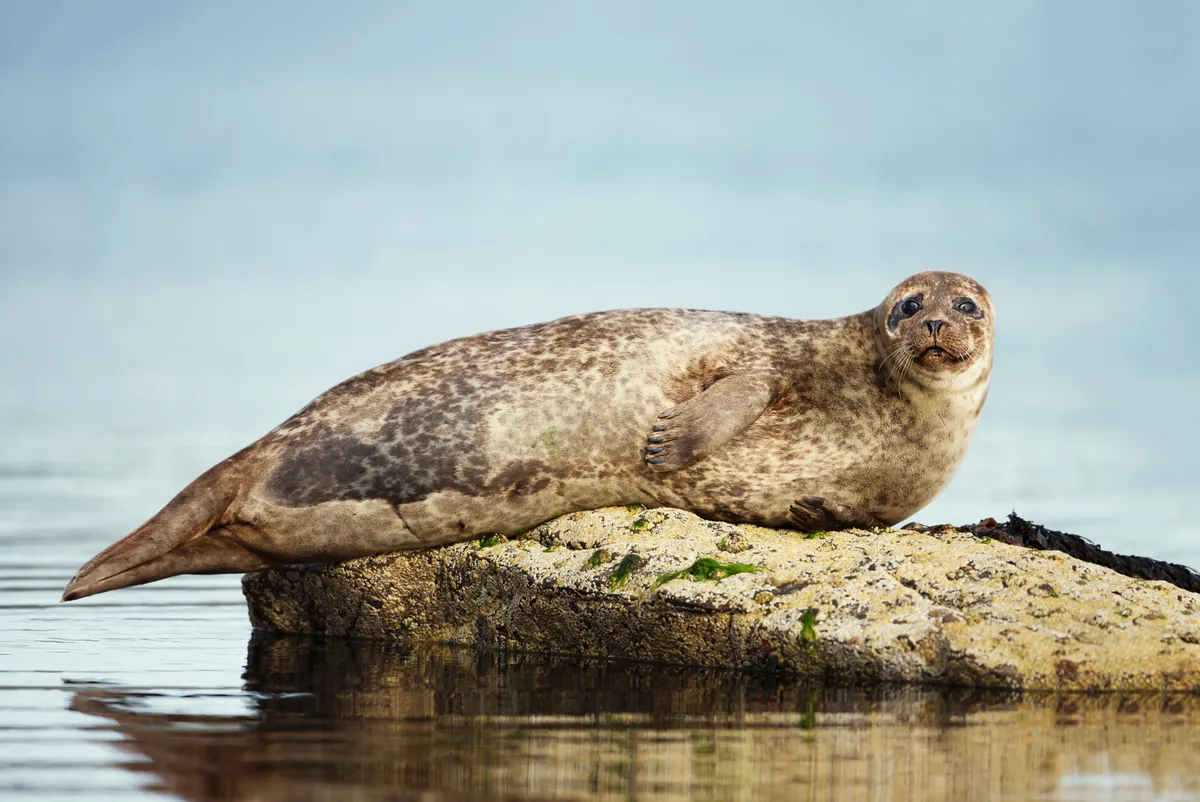
Adult harbour seals typically weigh 80-100kg, with the males being slightly larger than females, and they can live 20-30 years. They normally feed within a 20-mile area around their haul-out sites and eat between 3-5kg of fish a day depending on prey type.
Typical dives last somewhere between one and three minutes, although one male harbour seal was recorded diving for 30 minutes. Most foraging occurs at depths of 10-50m.
Harbour seals have more rounded faces than grey seals. They have V-shaped nostrils, whereas grey seals have nostrils that are more like parallel lines. At haul-out sites harbour seals tend to space themselves out more compared to grey seals, which group closely together. The species appears to compete with grey seals at some sites and while grey seal numbers have increased, harbour seal numbers have, in many areas, declined.
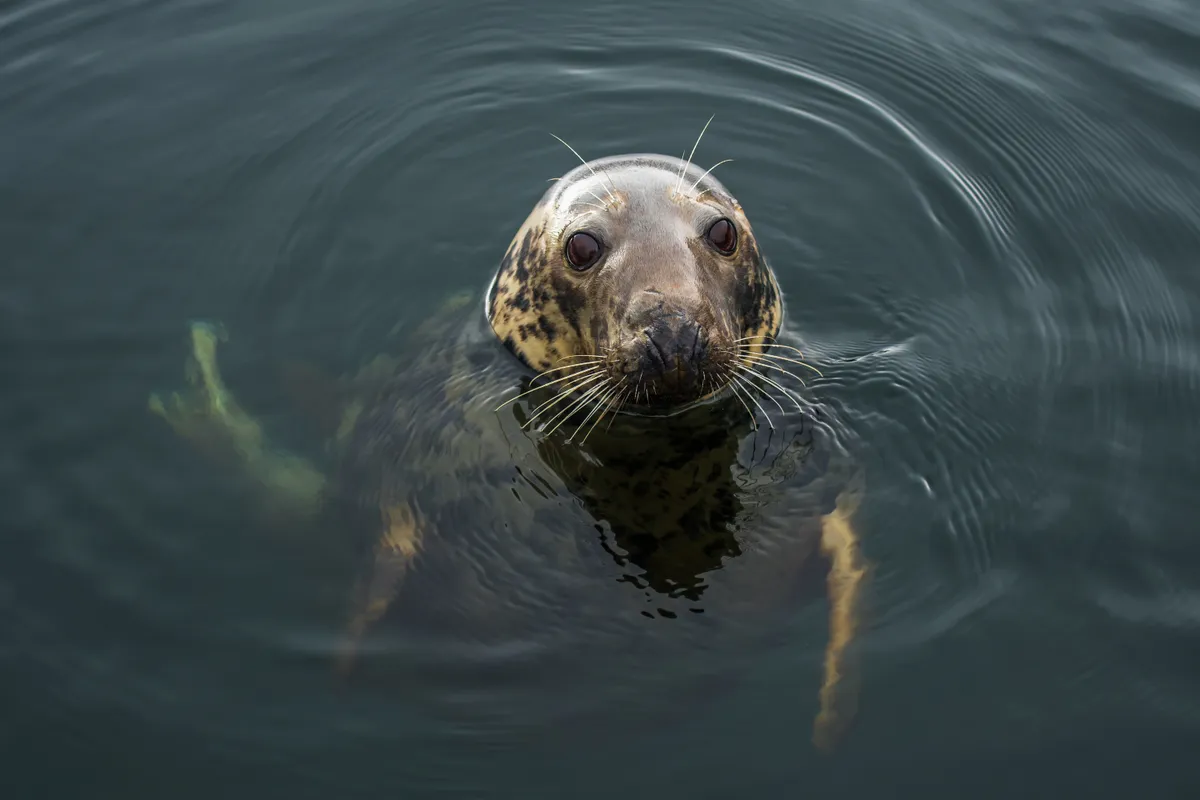
In 1998 the spread of phocine distemper virus (PDV) reduced the population of harbour seals along the east coast of England (mainly in the Wash) by 52%.
Best seal-spotting locations in the UK
Enjoy spotting seals along the British coastline, but remember to keep your distance.
Orkney Islands, Scotland
Boasting a resident population of 25,000 grey seals and 7,000 of their smaller relatives the common seal, the Orkney Islands are a perfect place to experience some seal action. Grey seals begin to pup here in October and can be observed on most beaches, remaining on land to suckle for 18 to 21 days after birth to build up their hefty insulating blubber jackets - pups can gain up to 2kg in weight a day!
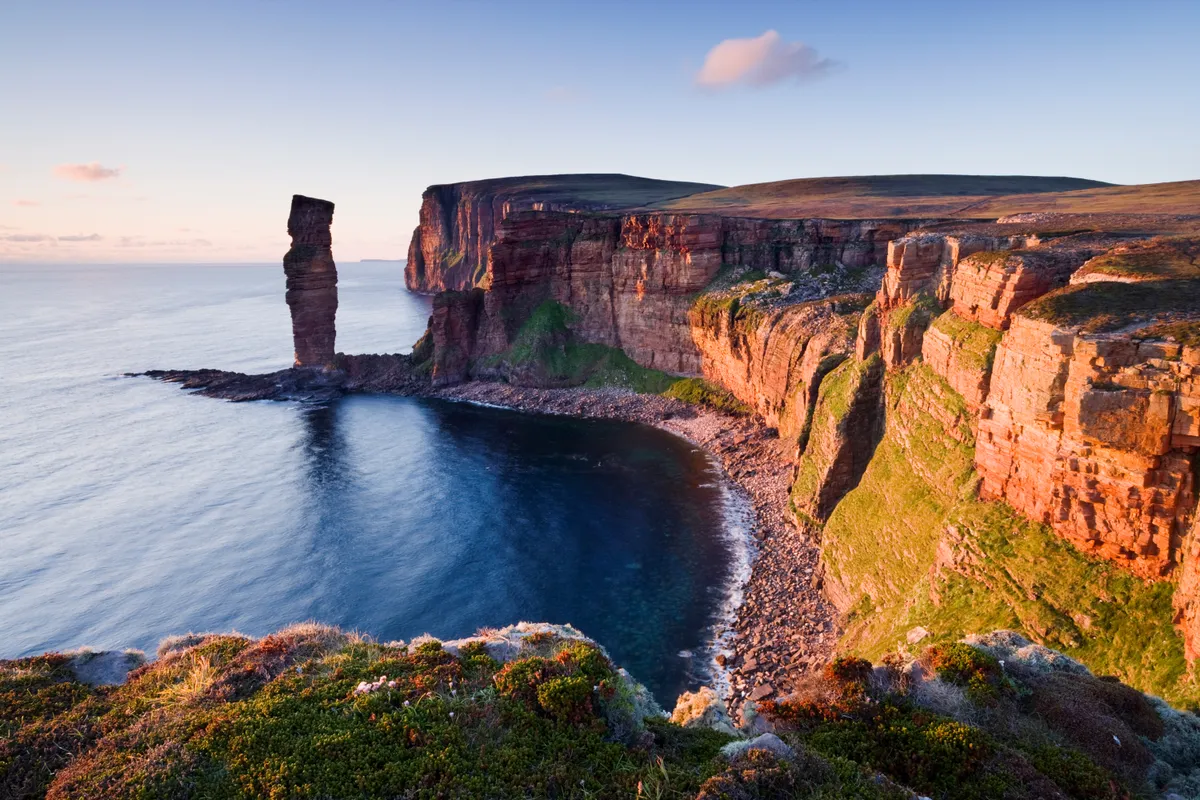
Blakeney, Norfolk
Within the Blakeney National Nature Reserve, basking common and grey seals can be seen on the 3 mile sandbank stretch of Blakeney Point. The two species give birth at different times of the year, with the greys pupping between November and January. In 2014, 2426 pups were born there.
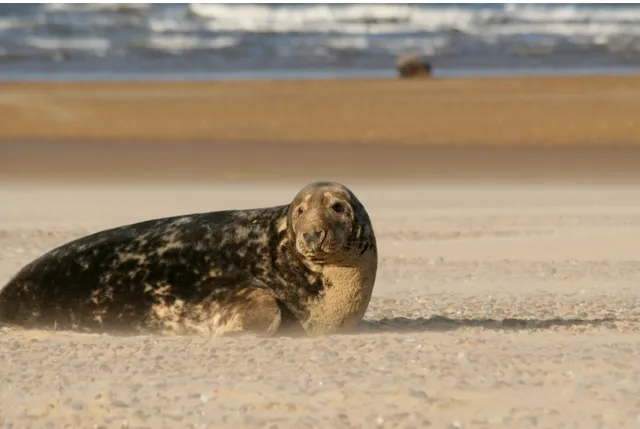
Various locations along the coast, West Cornwall
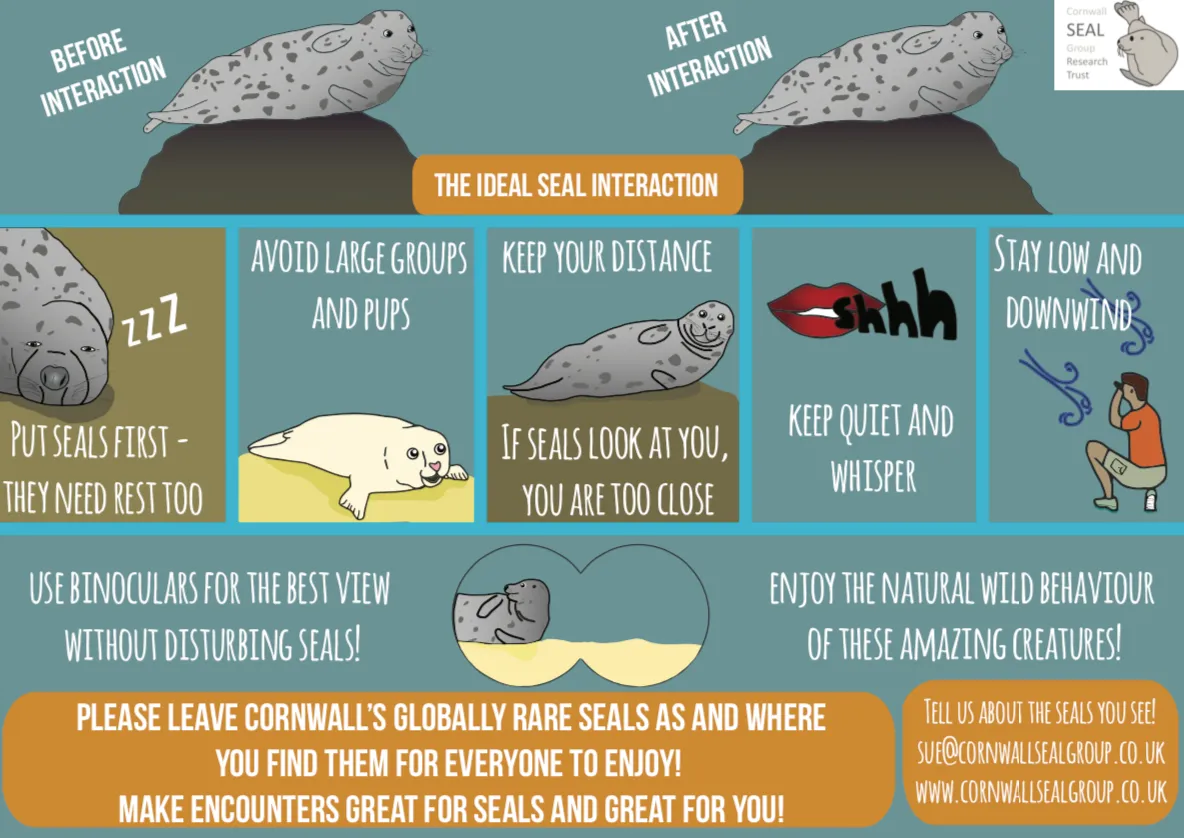
Along the West Cornish coastline there are various great seal-watching spots. Colonies of grey seals can sometimes be viewed in the sheltered bays at low tide (the beach is submerged at high tide) or from the cliff tops. Grey seals enjoy the white water around headlands and haul out on offshore islands and remote sheltered beaches.
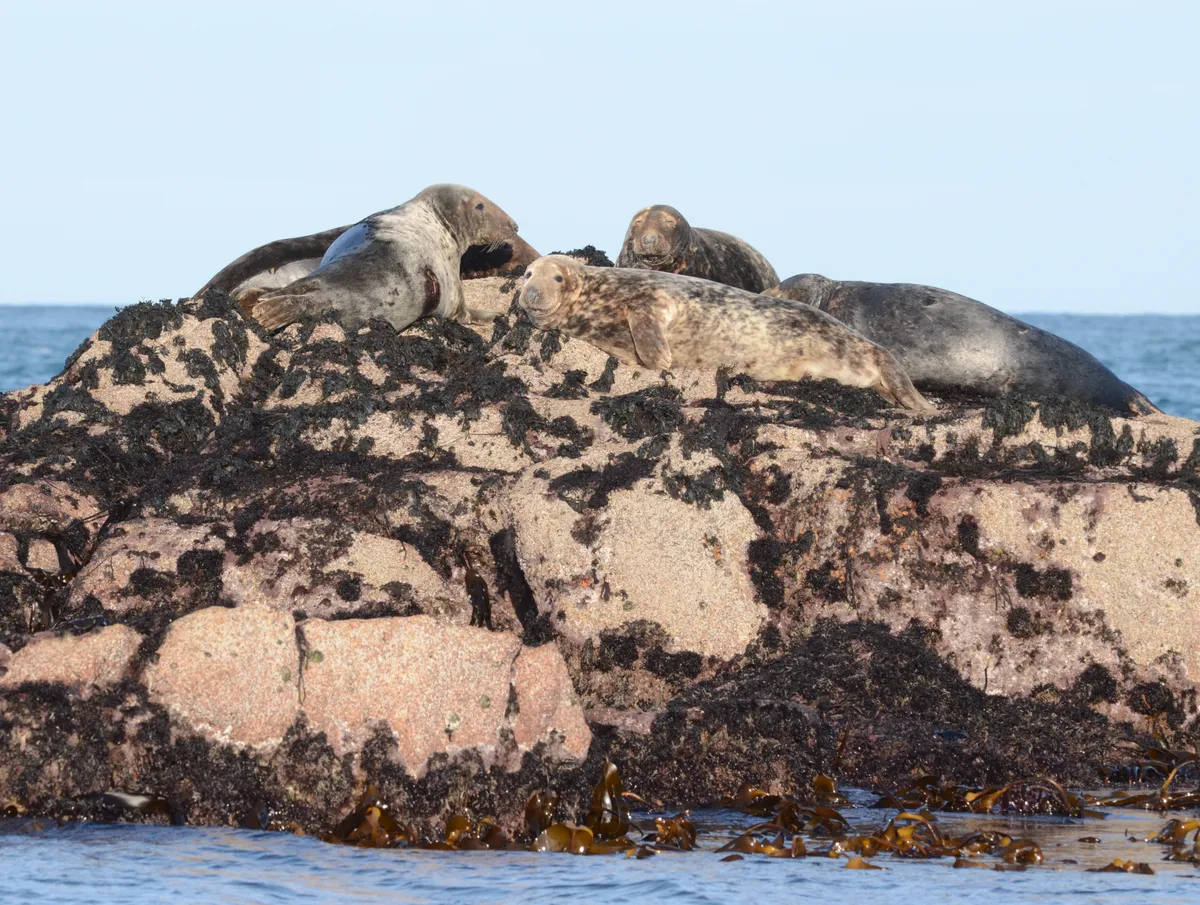
Donna Nook, Lincolnshire
Home to around 3,000 grey seals, this seal watching paradise has viewing areas at the foot of the sand dunes from which you can observe the seals that come to breed and pup here between October and December.
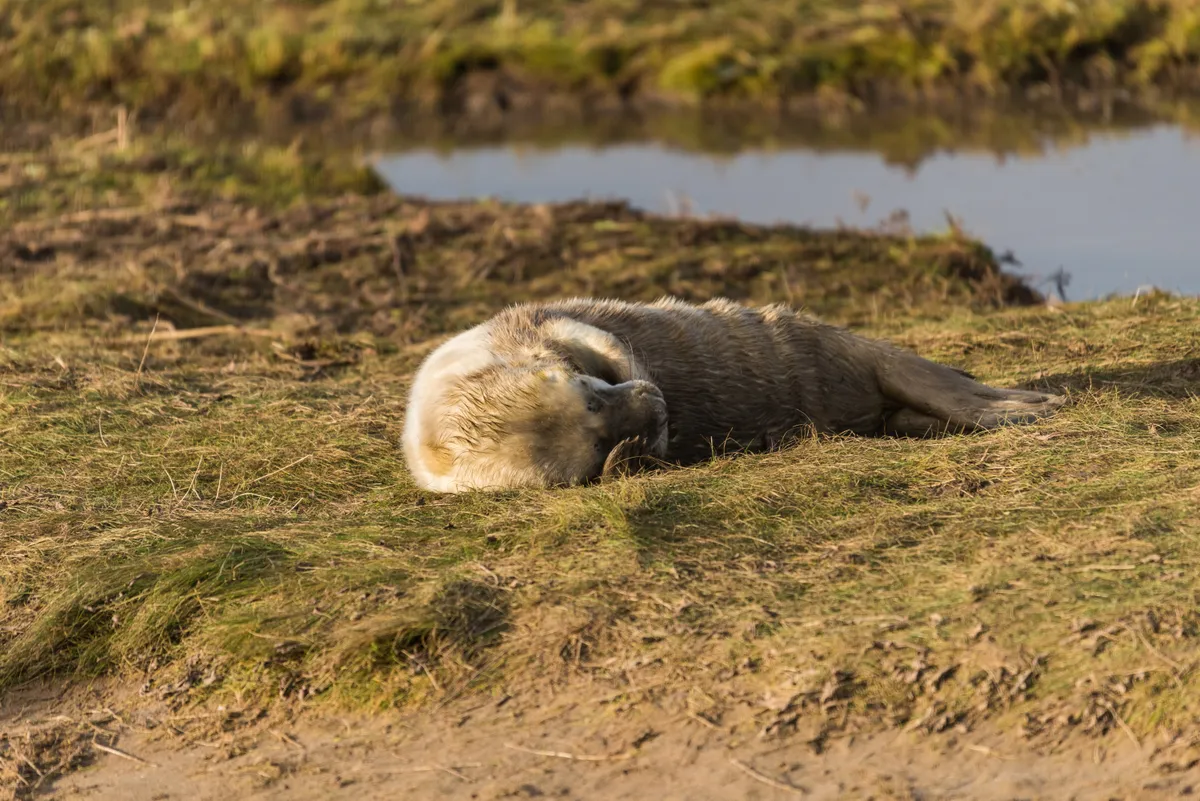
Skomer Island, Pembrokeshire
This 750-acre island bursts with wildlife, hosting the largest colonies of breeding seabirds in Britain including Manx Shearwaters, puffins and kittiwakes. Seals can be seen all year round, with the Garland Stone just off the coast being an excellent place to watch them lazily bask in the sun. October is the peak time to view pups and around 160 are born per year.
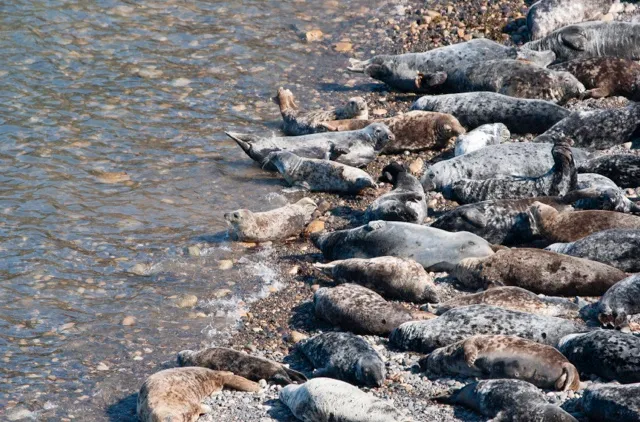
Monach Isles in the Outer Hebrides, Scotland
This group of uninhabited low-lying islands are a refuge to a large breeding colony of grey seals. October is the month to go when many pups are born. Visits should only be in calmer weather, with sailing and navigating the rocky shores being difficult on wilder days.
Farne Islands, Northumberland
The mesmerising sight of the largest grey seal colony along the east coast of Britain is a goose bump worthy spectacle. This National Nature Reserve is the birthing site of around 1,000 pups a year and seals can be seen basking on rocks at low tide. Boat trips are available here and seals often pop up alongside boats to investigate, their heads bobbing amongst the waves.
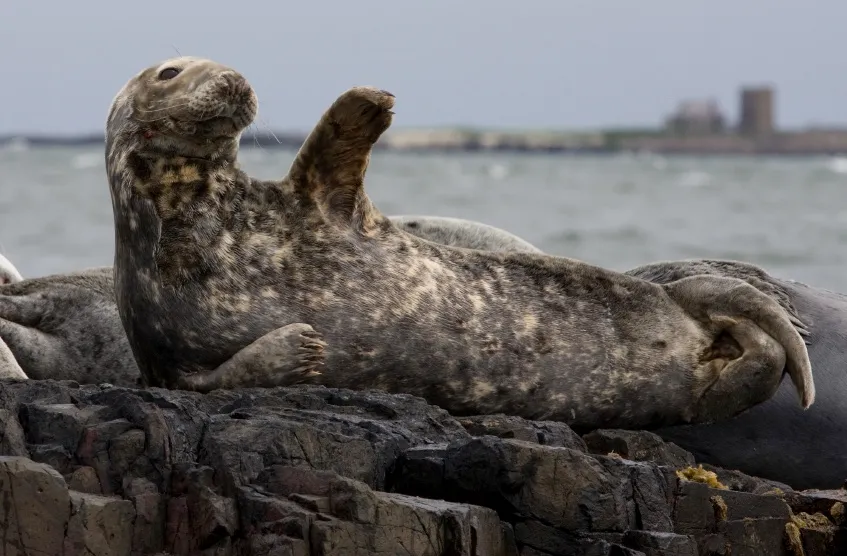
Horsey Gap, Norfolk
The vast beach, flat sand, shallow waters and towering dunes providing respite from the wind offer seals with an ideal location for giving birth. Designated viewing areas are present from which the seals can be observed at a safe distance (despite their plump and cuddly appearance grey seals have a powerful bite). These long sandy stretches are remarkably tranquil and free from visitors, so bring a picnic and explore this pristine shoreline.
Moray Firth, Scotland
Famous for its resident population of bottlenose dolphins, this area is also excellent for seals. Chanonry Point is a popular location to view these remarkable creatures. Check out the nearby Dolphin and Seal Centre in North Kessock while you're there to complete your marine mammal experience.
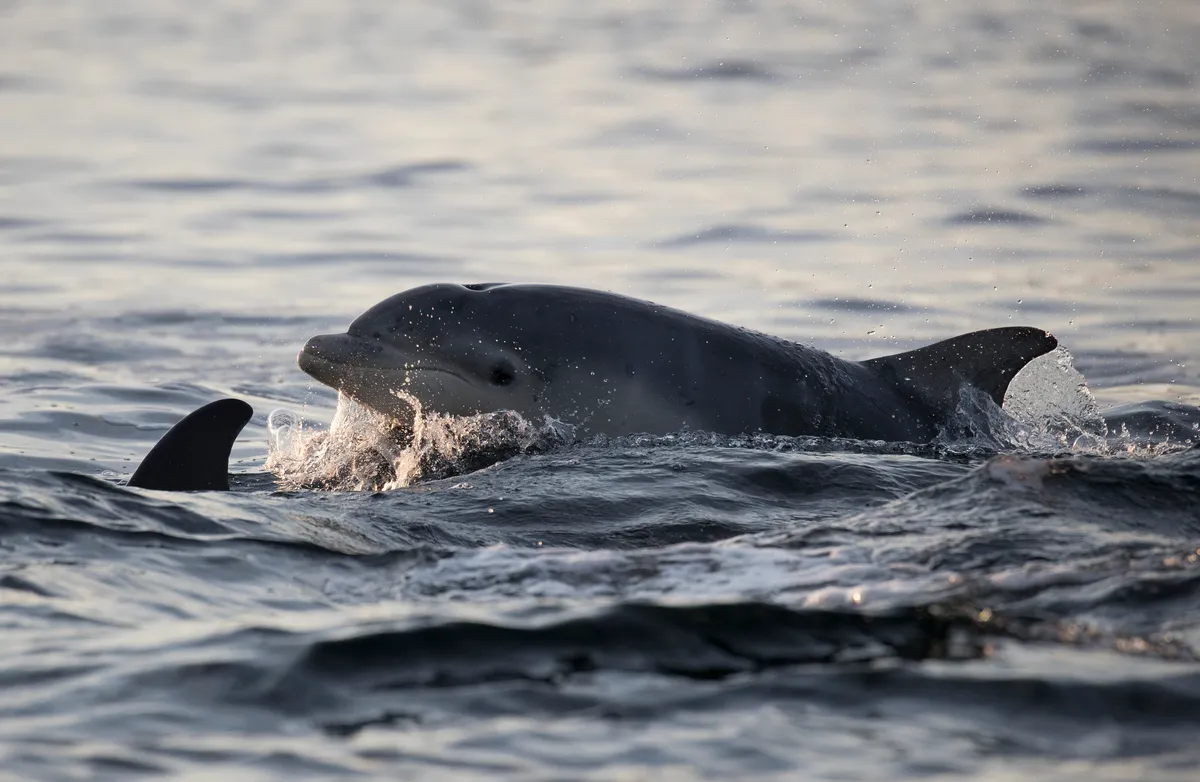
Falmouth, Cornwall
The calm waters of Falmouth Bay support a vast assemblage of marine life including dolphins and porpoises as well as the delightful grey seal. Seals are often seen on Black Rock near to Pendennis Point.
What to do if you spot a seal in distress
If you spot a seal in distress never approach the seal - instead contact one of the UK's seal conservation groups who will be able to send specialist help.
Contact the RSPCA who will decide whether they need treatment or are better left undisturbed. Often adult seals are spotted with netting or rope around their necks which need to be reported to the RSPCA.
Alternatively, in Cornwall, if you are concerned about a live seal, contact the British Divers Marine Life Rescue who will send out a trained medic to assess the seal on 01825 765546. Find more information at the Cornwall Seal Research group, cornwallsealgroup.co.uk
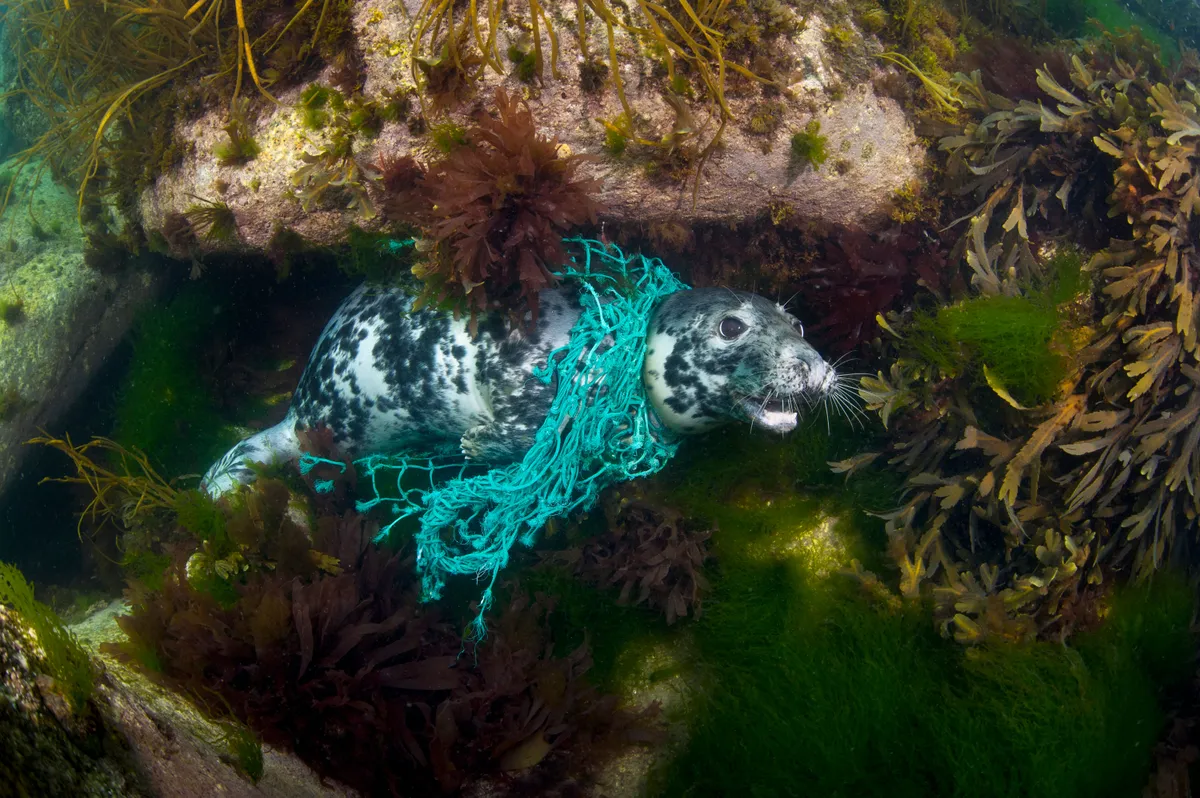
Case study: seals along the Norfolk coast
Each year, around 80,000 people flock to the Norfolk coast to see the breeding seal colony on the beach. But does the behaviour of some tourists threaten to drive the mammals away? Serena Shores reports.
The seals are here because of the wide expanse of sand at Horsey, where there are miles of pebble-dotted beaches. A sea wall borders the beach and beyond it there are large dunes. The upper beach provides a safe haven from waves, even at high tide – essential because young seal pups cannot swim.
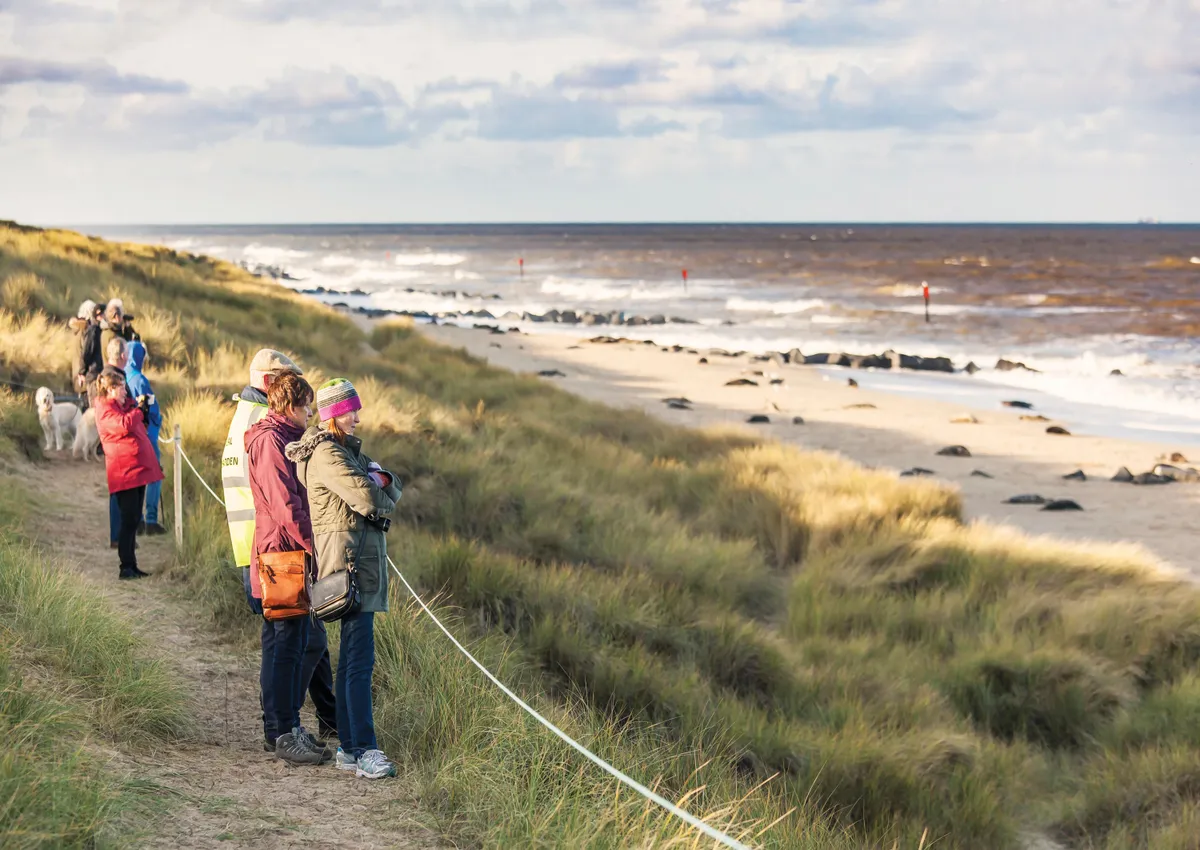
The colony has around 4,000 seals in all, and the numbers are booming. Whereas in 2004 only 100 grey seal pups were born, last winter more than 2,000 began their lives here. Not only are the mothers of 25 or 30 years returning annually, but young females come into season after four or five years and are drawn back to the place of their birth. Luckily, there is plenty of room for them all.
Then with the first warm spring sunshine, a smattering of harbour (or common) seals – smaller cousins to greys – arrive for their summer breeding season. By June and July, the drama is repeated as hundreds of harbour seals give birth.
Popular appeal
The grey seal colony is one of Britain’s great wildlife spectacles, attracting around 80,000 human visitors to the area each year. “To begin with, we wanted to keep the colony secret,” admits Peter Ansell, a volunteer warden at the beach. “But word of mouth, press reports and the power of social media have created a frenzy around the site.”
Such is the popularity of the seals in both summer and winter that some visitors can’t resist the opportunity to get close to them, often for a picture opportunity. “Although the beach and parts of the dunes are roped off in winter, a small percentage choose not to obey this boundary,” says Peter.
The problem is that some visitors find the pups irresistibly cute. “The fluffy white coats of the newborn pups are extremely appealing,” Peter says, “and people think that they can touch or even cuddle them.”
Amateur photographers have been seen poking lenses into the faces of seals, with others allowing dogs and children to run among the colony unchecked. Peter believes that the culture of the camera-phone is “partly responsible for a selfish attitude when it comes to getting closer and closer to all seashore wildlife”. There have been accounts of people prodding seals and even shoving them into the sea. One father had to be stopped from trying to sit a toddler on the back of a seal pup at nearby Winterton, apparently to take a photograph.
The lifecycle of a Norfolk seal
- The species at Horsey are predominantly grey seals (Halichoerus grypus), with a few harbour seals (also known as common seals, Phoca vitulina) joining the colony.
- Female grey seals return to Horsey each November or December to give birth, feeding their pups for around three weeks with rich milk that comprises 60% fat. Unsurprisingly, the pups treble in weight from around 15kg to 45kg.
- The mother then mates with at least one bull, before abandoning her pup without instruction. The weaned pup spends three weeks resting, without food or water, before making its first foray into the sea for food. There they develop a taste for herring, but will take whatever fish species are available, from sand eels to crabs.
- From Horsey and along the Norfolk coast, seals make remarkable journeys around our coastline. For instance, Blitzen (Blue Flipper Tag 160) was rescued and released in Norfolk and a few weeks later turned up in Northumberland. Seals beach in March or April to moult, shedding their thick winter coat. And so the cycle continues, with females tending to live for around 35 years, and males – battered by territorial disputes with other bulls – for just 25.
Distressing overexposure
The fact that some seals make no attempt to move when approached encourages some visitors to get ever closer. “It makes people think that it’s fine to crowd around them,” says Stephanie Davis, founder of charity Seal and Shore Watch. But the seal’s lack of response may simply be a sign of weakness and lethargy, often due to dehydration.
Unfortunately, such close encounters with humans and their pets distress adult seals. “Noise from dogs and people is terrifying,” says Stephanie. “And a struggling animal, be it through illness, injury or simply a young pup in trouble, is already in great distress.”
Stephanie says rescue attempts by Seal and Shore Watch – whose medics operate along most of the Norfolk coast – are sometimes hindered when curious onlookers fail to move back and let the medics do their jobs. “Not giving the seals their distance risks them returning to the water and a death sentence,” she warns.
Human intruders affect healthy seals, too. In the spring, seals lying on the beach are shedding their winter coats, which means they aren’t insulated against the cold sea. Unfortunately, if even one seal is spooked into bolting for the water, the rest will follow, tiring them out and lowering their body temperature.
The same is true of weaned pups in their new adult coats; they come ashore to rest and will only return to the sea when ready – unless they are startled into fleeing. In summer, there are sometimes so many people on the beach that harbour seal pups – now novice swimmers – can find it hard to locate a quiet place to come ashore.
In some cases, mother seals may flee to the sea, abandoning their pups, which then face possible starvation.
Dangerous encounters
Some dog owners let their pets off the lead to run among the colony, causing severe problems. “Not controlling dogs has sadly proven to be more than just an issue of disturbing the seals,” says Alison Cramp, senior marine medic for Seal and Shore Watch. “People have refused to call dogs back, and seal pups have been savaged or even killed.”
Quite apart from the risk to seals, there is also a danger to the humans and dogs who stray too close. Seals have the bite of a Rottweiler and a mouth full of unpleasant bacteria; a wound can take up to a year to heal. And while seals appear heavy and cumbersome on land, he warns that they are actually agile and quick to strike in self-defence. A mother feeding her pup in particular will be ferociously protective.
No boundaries
Winterton, to the east, throws up different issues. Unlike Horsey, it has no sea wall and is just a continuous stretch of sand, making it almost impossible to rope off sensitive areas. The gentle rise of the beach entices pregnant cow seals and it is easy for walkers to stumble across a mum and pup in a sandy hollow. These dunes also contain bulls, which can be dangerous. Some online information about the coastal path suggests to walkers that they can access anywhere along the shoreline, which people find misleading.
The wardens at Winterton encourage people to watch the seals from viewing platforms. They will go on to the beach to ask visitors to return to designated paths, but can’t enforce an exclusion zone. There is legislation that offers a certain protection year round, but seals don’t qualify for any special treatment, such as officially closing the beach during breeding season.
The tourist invasion affects other wildlife on the beach at Winterton. Plovers and little terns nesting in summer are vulnerable to the hordes of visitors, too. An electric fence deters people and dogs from straying on to tern nesting sites.
Protective measures
Fortunately, sympathetic locals continue to help out on the beaches. Volunteer wardens from the Friends of Horsey Seals patrol the area looking for animals in difficulty. They are linked to the Seal and Shore Watch by a call-out system (the number is advertised on posters and in the press). This alerts all the marine protection organisations in the area and dispatches medics to help. The rescued animals are taken to rehabilitation centres such as the RSPCA East Winch and Hunstanton Sea Life Centre, which have specialist facilities to care for them.
“Education is crucial,” says Peter Ansell, who volunteers with the Friends of Horsey Seals. “I take groups of schoolchildren to the beach and we appeal for volunteer wardens to inform the public. If the colony continues to expand, there won’t be enough people to police it. This is where public information and responsibility become essential.”
If you’d like to visit Horsey in winter, you can appreciate the spectacle of the colony without harming the seals. Follow clear signs to viewing areas overlooking the sea, and enjoy one of Britain’s greatest wildlife experiences guilt-free.
Serena Shores is a writer, photographer and artist based in North Norfolk with an interest in history and the natural world. As well as writing about the wildlife and heritage of the area, she likes to capture local scenes in oils.
